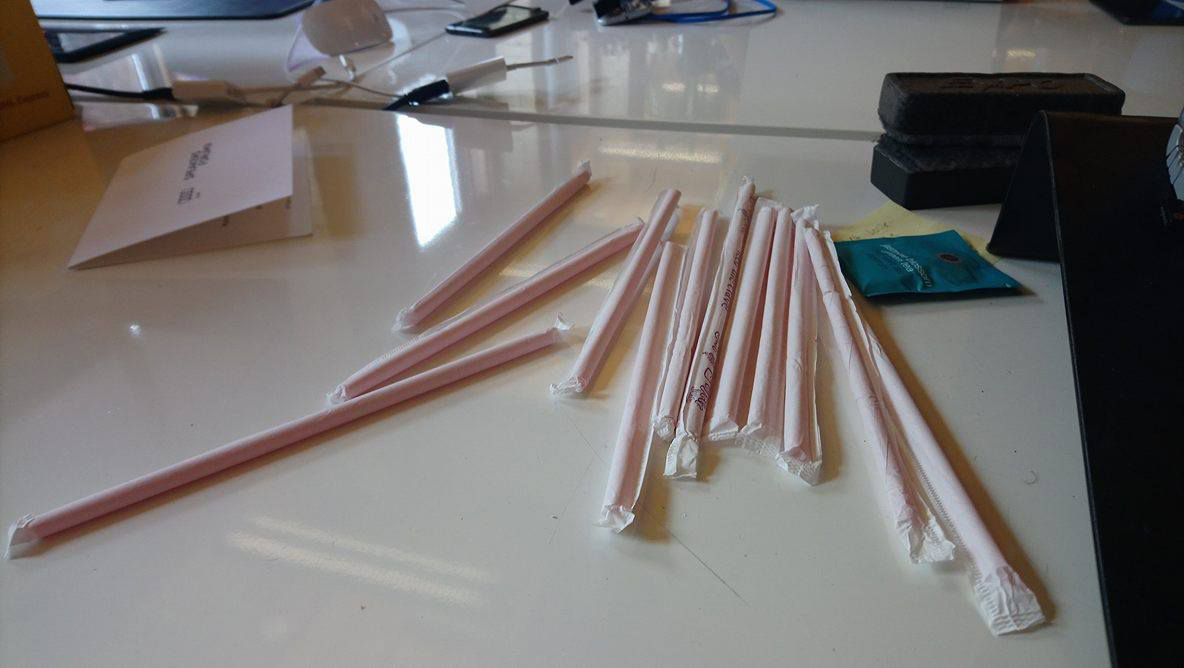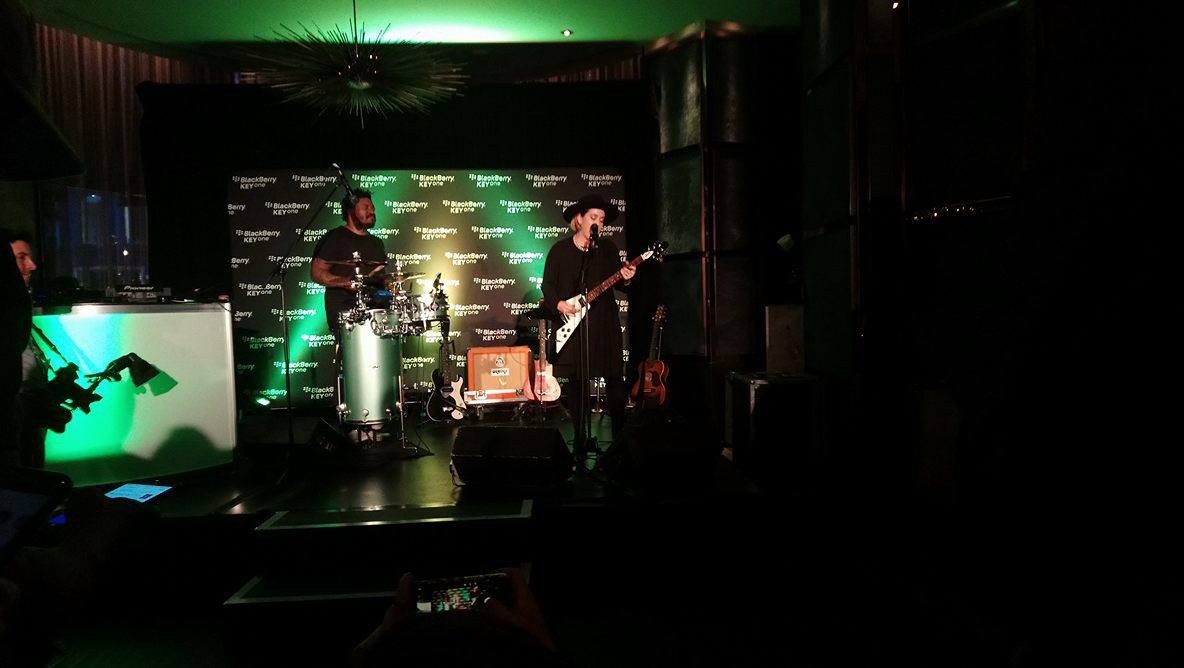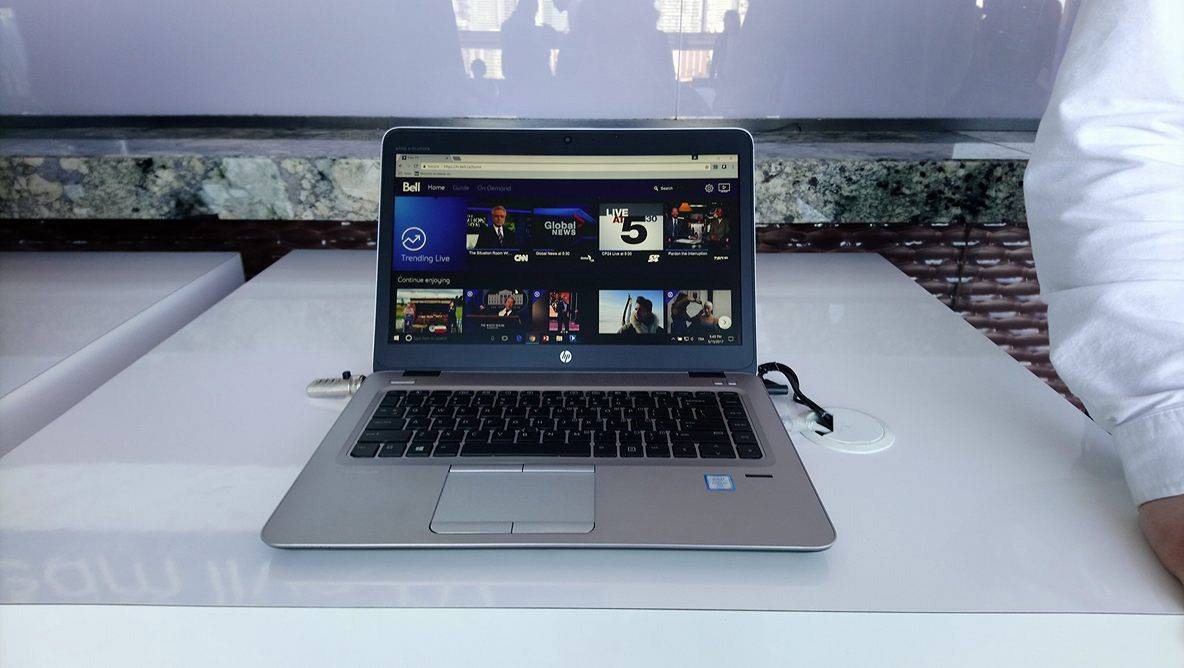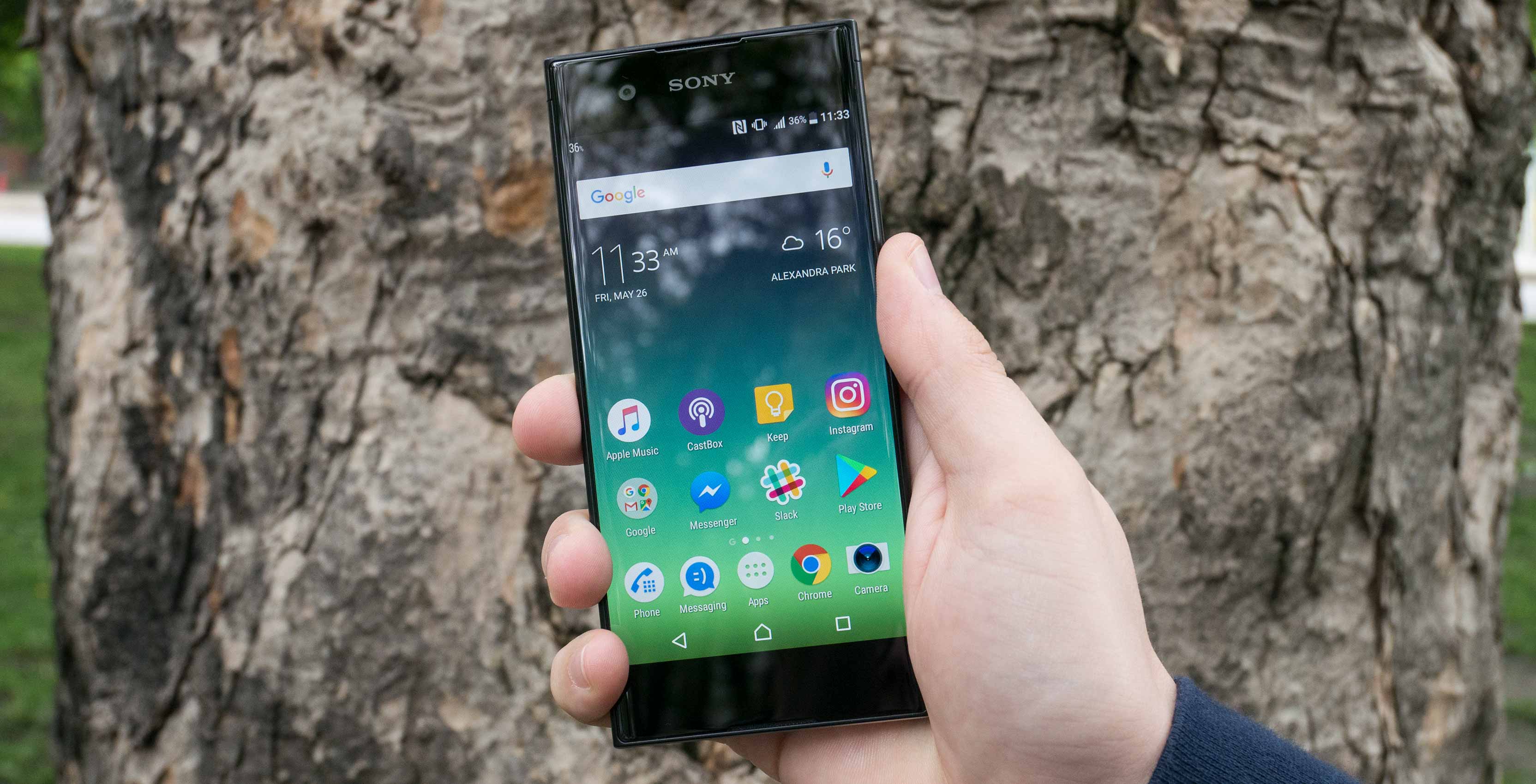
The Pros
- Super slim design
- Barely-there side bezels
- Better-than-average camera experience
The Cons
- Small battery compared to other budget phones
- Camera doesn't live up to hype
- Unimpressive display and audio
Budget Android phones usually have one great thing about them.
That’s because manufacturers can’t afford to push each spec to the limit like they can with premium devices, so rather than just aim for an overall mediocre but inexpensive device, they choose one element of the device to shine above the others.
For the LG X Power and LG X Power 2, for instance, that element was the battery — a 4,100mAh pack in the first generation and 4,500mAh on the second, allowing for multiple days of life. For the Sony Xperia XA1, it’s the camera.
Sony Xperia XA1
Sony Xperia XA1 Ultra
Display
5.0-inch HD 720p, 294ppi
6.0-inch Full HD 1080p (1920x1080 pixels, 367ppi)
Processor
MediaTek helio P20 Octa Core 64bit (Quad core 2.3GHz + Quad core 1.6GHz)
MediaTek helio P20 Octa Core 64bit (Quad core 2.3GHz + Quad core 1.6GHz)
RAM
3GB
4GB
Storage
32GB (microSD card up to 256GB)
Up to 32 GB / 64 GB flash memory (microSD card, up to 256GB)
Dimensions (in.)
145 x 67 x 8mm
165mm x 79mm x 8.1mm
Weight
143g
188g (tbc)
Rear Facing Camera
23MP 1/2.3” Exmor RS for mobile image sensor, Hybrid Autofocus, 0.6s Quick Launch, 24mm wide-angle F2.0 lens, 5x Clear Image Zoom, SteadyShot
23MP 1/2.3” Exmor RS for mobile image sensor, Hybrid Autofocus, 0.6s Quick Launch, 24mm wide-angle F2.0 lens, 5x Clear Image Zoom, SteadyShot
Front Facing Camera
8MP 1/4" Exmor R for mobile, 23mm wide-angle lens, F2.0, Autofocus, SteadyShot
16MP 1/2.6” Exmor RS for mobile image sensor, 23mm wide-angle lens F2.0, Front Facing Flash, OIS, Autofocus
OS
Android 7.0
Android 7.0
Battery
2300 mAh
2700 mAh
Network Connectivity
LTE (4G), LTE Cat6/4, GSM GPRS/EDGE (2G), UMTS HSPA+ (3G)
LTE (4G), LTE Cat6 (EU)/ Cat4, GSM GPRS (2G), UMTS HSPA (3G)
Sensors
Fingerprint (side-mounted), accelerometer, proximity, compass
Accelerometer, proximity, compass
SIM Type
nano SIM
nano SIM
Launch Date
February 26, 2017
February 26, 2017
Misc
Black and White colour options in Canada
White, Black and Gold
Display
Sony Xperia XA1
5.0-inch HD 720p, 294ppi
Sony Xperia XA1 Ultra
6.0-inch Full HD 1080p (1920x1080 pixels, 367ppi)
Processor
Sony Xperia XA1
MediaTek helio P20 Octa Core 64bit (Quad core 2.3GHz + Quad core 1.6GHz)
Sony Xperia XA1 Ultra
MediaTek helio P20 Octa Core 64bit (Quad core 2.3GHz + Quad core 1.6GHz)
RAM
Sony Xperia XA1
3GB
Sony Xperia XA1 Ultra
4GB
Storage
Sony Xperia XA1
32GB (microSD card up to 256GB)
Sony Xperia XA1 Ultra
Up to 32 GB / 64 GB flash memory (microSD card, up to 256GB)
Dimensions (in.)
Sony Xperia XA1
145 x 67 x 8mm
Sony Xperia XA1 Ultra
165mm x 79mm x 8.1mm
Weight
Sony Xperia XA1
143g
Sony Xperia XA1 Ultra
188g (tbc)
Rear Facing Camera
Sony Xperia XA1
23MP 1/2.3” Exmor RS for mobile image sensor, Hybrid Autofocus, 0.6s Quick Launch, 24mm wide-angle F2.0 lens, 5x Clear Image Zoom, SteadyShot
Sony Xperia XA1 Ultra
23MP 1/2.3” Exmor RS for mobile image sensor, Hybrid Autofocus, 0.6s Quick Launch, 24mm wide-angle F2.0 lens, 5x Clear Image Zoom, SteadyShot
Front Facing Camera
Sony Xperia XA1
8MP 1/4" Exmor R for mobile, 23mm wide-angle lens, F2.0, Autofocus, SteadyShot
Sony Xperia XA1 Ultra
16MP 1/2.6” Exmor RS for mobile image sensor, 23mm wide-angle lens F2.0, Front Facing Flash, OIS, Autofocus
OS
Sony Xperia XA1
Android 7.0
Sony Xperia XA1 Ultra
Android 7.0
Battery
Sony Xperia XA1
2300 mAh
Sony Xperia XA1 Ultra
2700 mAh
Network Connectivity
Sony Xperia XA1
LTE (4G), LTE Cat6/4, GSM GPRS/EDGE (2G), UMTS HSPA+ (3G)
Sony Xperia XA1 Ultra
LTE (4G), LTE Cat6 (EU)/ Cat4, GSM GPRS (2G), UMTS HSPA (3G)
Sensors
Sony Xperia XA1
Fingerprint (side-mounted), accelerometer, proximity, compass
Sony Xperia XA1 Ultra
Accelerometer, proximity, compass
SIM Type
Sony Xperia XA1
nano SIM
Sony Xperia XA1 Ultra
nano SIM
Launch Date
Sony Xperia XA1
February 26, 2017
Sony Xperia XA1 Ultra
February 26, 2017
Misc
Sony Xperia XA1
Black and White colour options in Canada
Sony Xperia XA1 Ultra
White, Black and Gold
With a rear-facing 23-megapixel shooter features a f/2.0 aperture, 24mm wide-angle lens and hybrid autofocus, the phone stands out from its peers at a similar price point. At least on paper, you aren’t about to find any device as impressively specced-out in the camera department for $320 CAD.
On the flip side, Sony seemed to have its budget in mind when it decided to include a 2,300mAh non-removable battery, small even in the arena of inexpensive devices.
However, just as you can’t judge a book by its cover, you can’t judge a phone solely by its specs sheet — implementation and software are also major factors in ultimate performance — a fact that was reinforced by the XA1. After spending a few weeks with the phone, I found that both what I most anticipated and dreaded about this device turned out to be slightly misguided notions.
Simple and slim
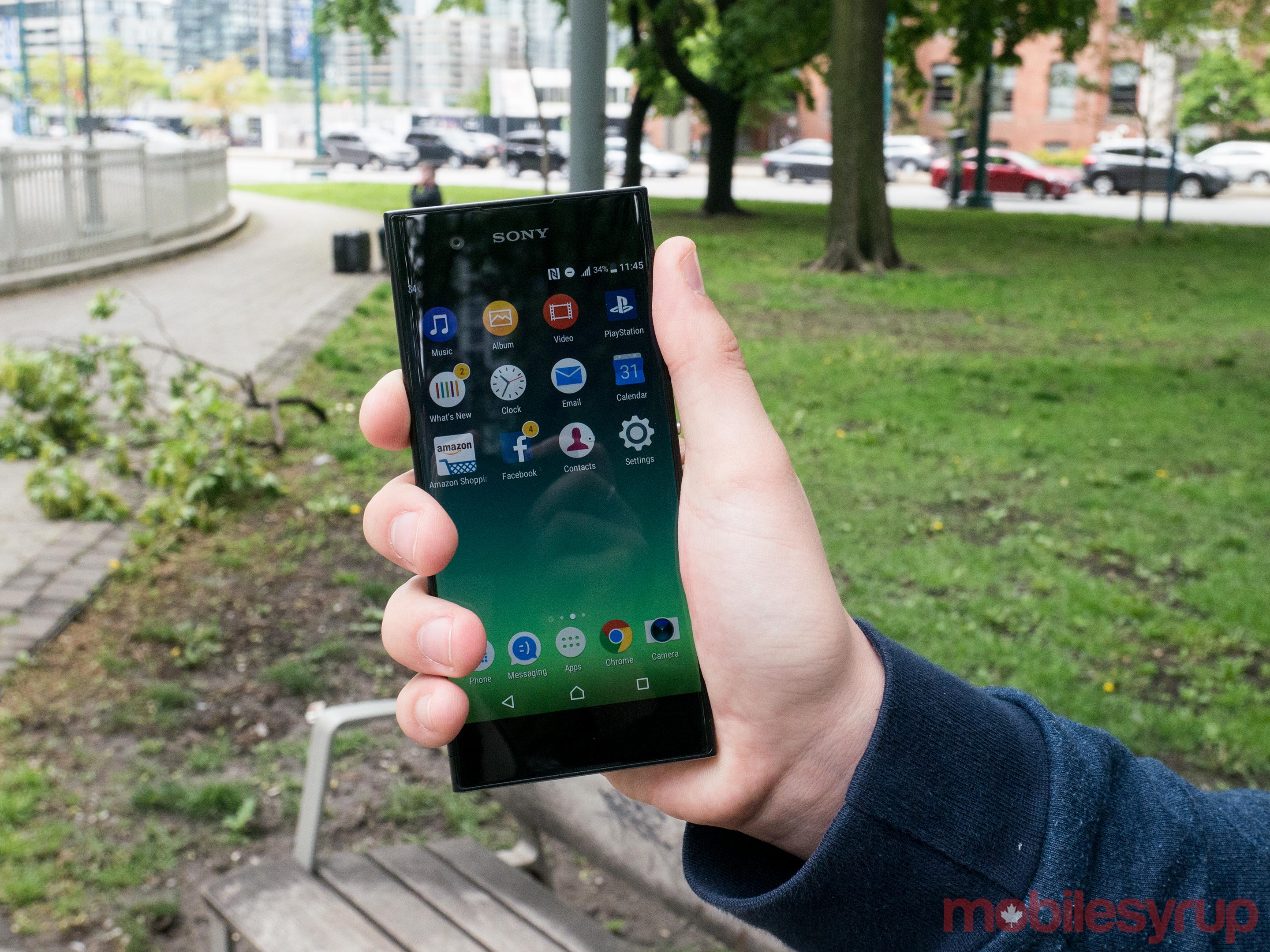
Sony’s particular style of design for smartphones doesn’t generally appeal to me — they are too boxy and minimal for my liking — but I understand the brand has its fierce fans when it comes to aesthetics and I must note that while initially I disliked its simple, slab-like design, I soon began to warm to its aestheti, in part for its minimalism but mainly for its practical functionality.
Much like the Samsung Galaxy S8, the device’s form is long and thin — though at 67mm it beats the more premium device’s 68.1mm width. The 5-inch display spans across almost the entirety of that width, with only the slimmest of side bezels.
The comfort of this thin form factor can’t be emphasized enough. It makes it incredibly easy to navigate the device with one hand without comprising the overall size of the display. The XA1 far outdoes most of its competitors in this respect — including the LG X Power and its successor the X Power 2, the Moto G5, Samsung Galaxy J3 (2016), Alcatel Idol 4, Xiaomi Redmi Note 4 and the XA1 Ultra (which verges more into mid-range territory, offers a larger 6-inch display and hasn’t yet debuted in Canada).
Big bezels paired with small bezels
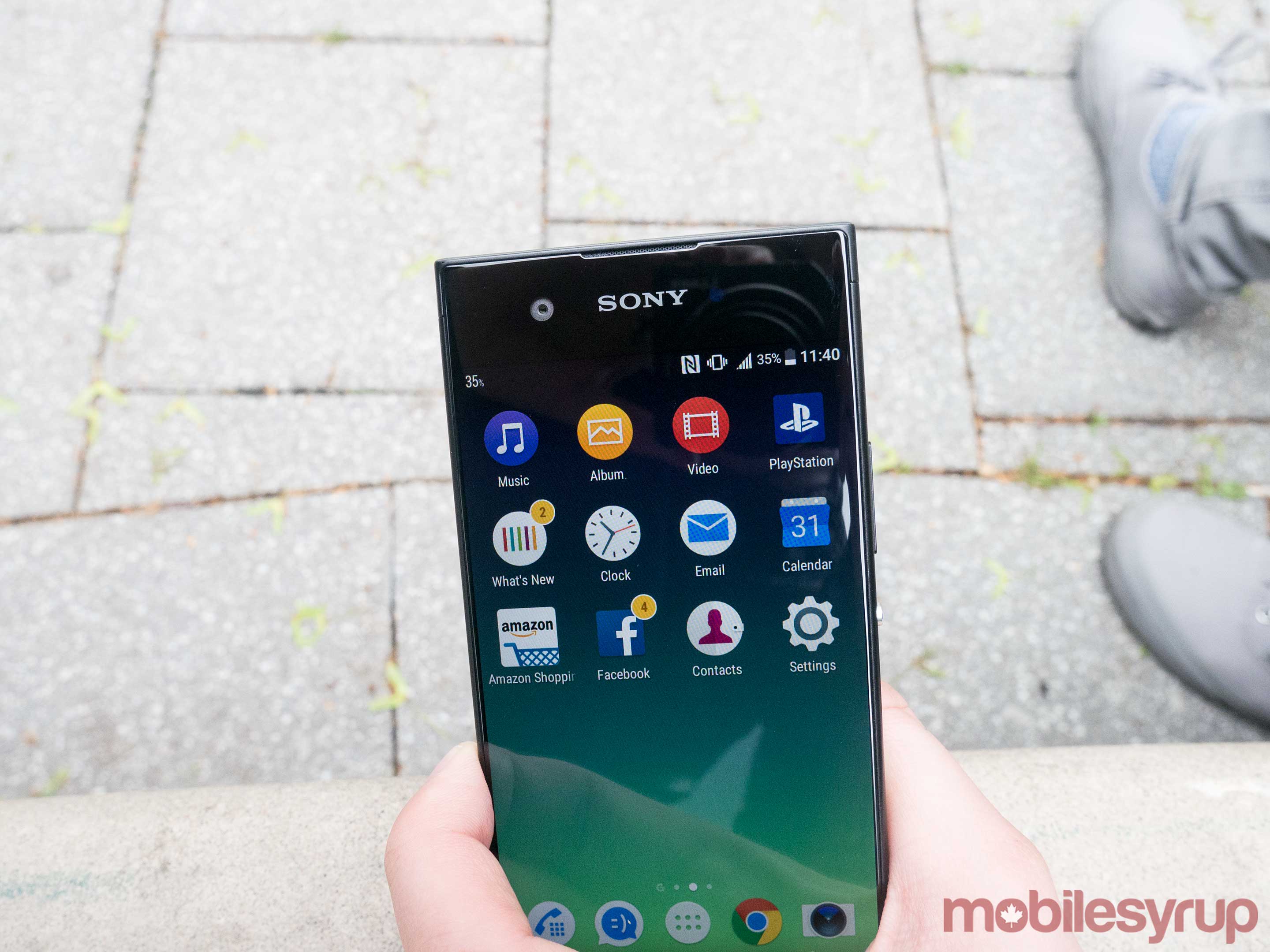
In terms of thickness and weight, at 8mm and 143 grams, it comes in generally in the middle of the pile compared to its competitors — not the best, not the worst. But those metrics both matter much less to me, as someone with small hands, than a comfortably thin width. The width also pairs with sharply cut aluminum edges, making it much more secure to grip than some plastic or metal devices.
I will note that the top and bottom bezels appear somewhat ludicrously chunky, though in reality, the bottom bezel serves a purpose in providing a thumb-rest. The rear of the phone has the camera positioned tightly to the left, and has a somewhat easily scratched rear surface.
Additionally, the device features a dedicated camera launch button, USB-C charging, dual front-facing speakers and a bottom-firing speaker, providing good quality audio for playing out loud.
Middling audio and display quality
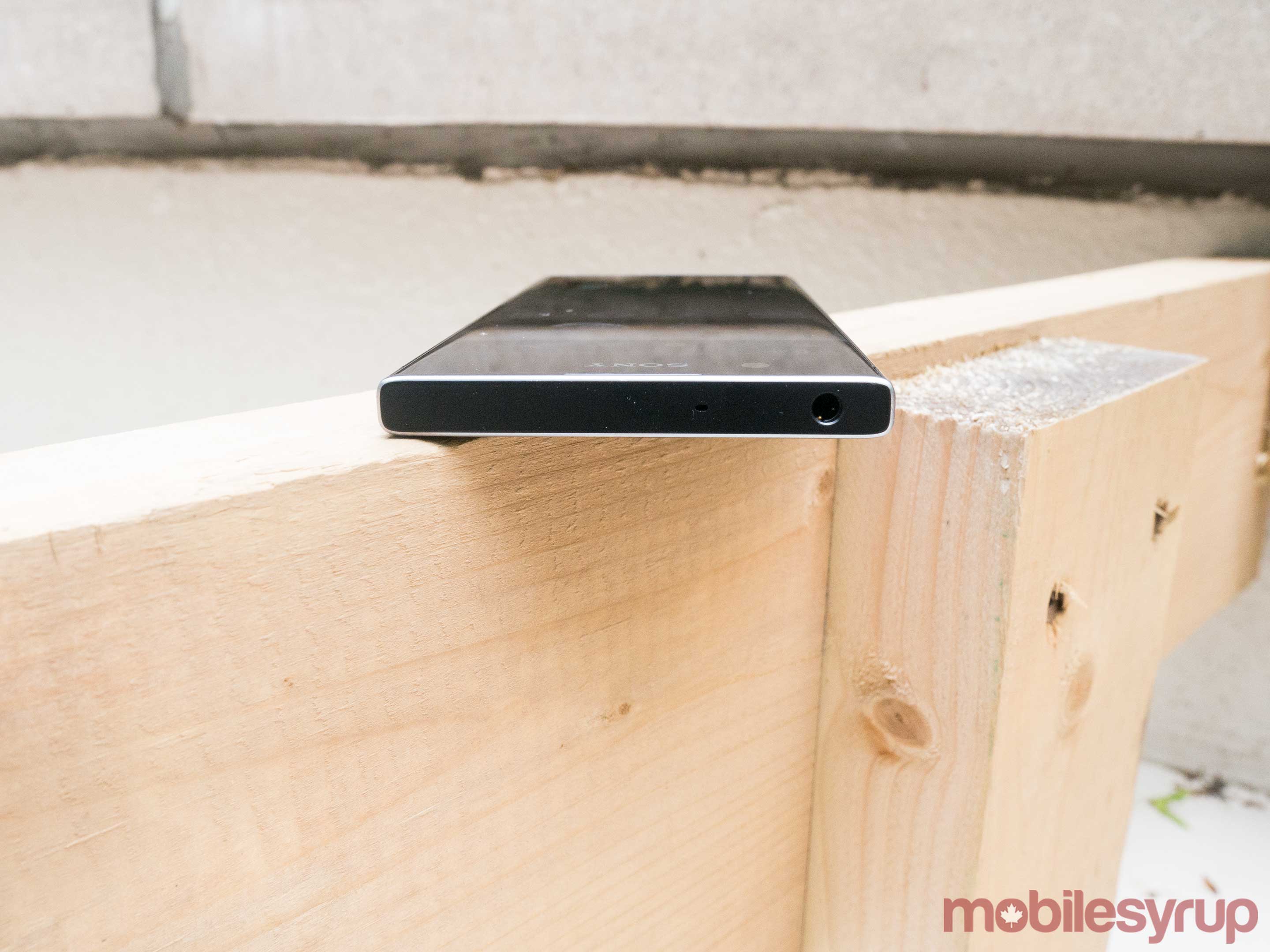
Unfortunately, the wired experience isn’t quite as impressive. Sony says the device includes active noise cancellation, but it’s difficult to hear audio content though my wired earbuds in a busy urban environment or on loud transit, and all but impossible to use in a noisy plane.
The IPS LCD display also suffers in out door environments or direct sunlight, though it outperforms the Moto G5 and has notably less over-saturation. Unlike the 1920 x 1080 pixel Moto G5, however, it features an unimpressive 720 x 1280 pixel resolution with 291ppi density. It’s far from alone in the budget category when it comes to having a 720p resolution — the Galaxy J3 and both X Powers have the same resolution, for instance — but many more are offering more modern 1080p displays, including the Idol 4, XA1 Ultra and Redmi Note 4.
Overall, display tech doesn’t factor too highly into my estimation of a device, but it may be disappointing to those who frequently stream video or play mobile games.
Enough battery to get through the day
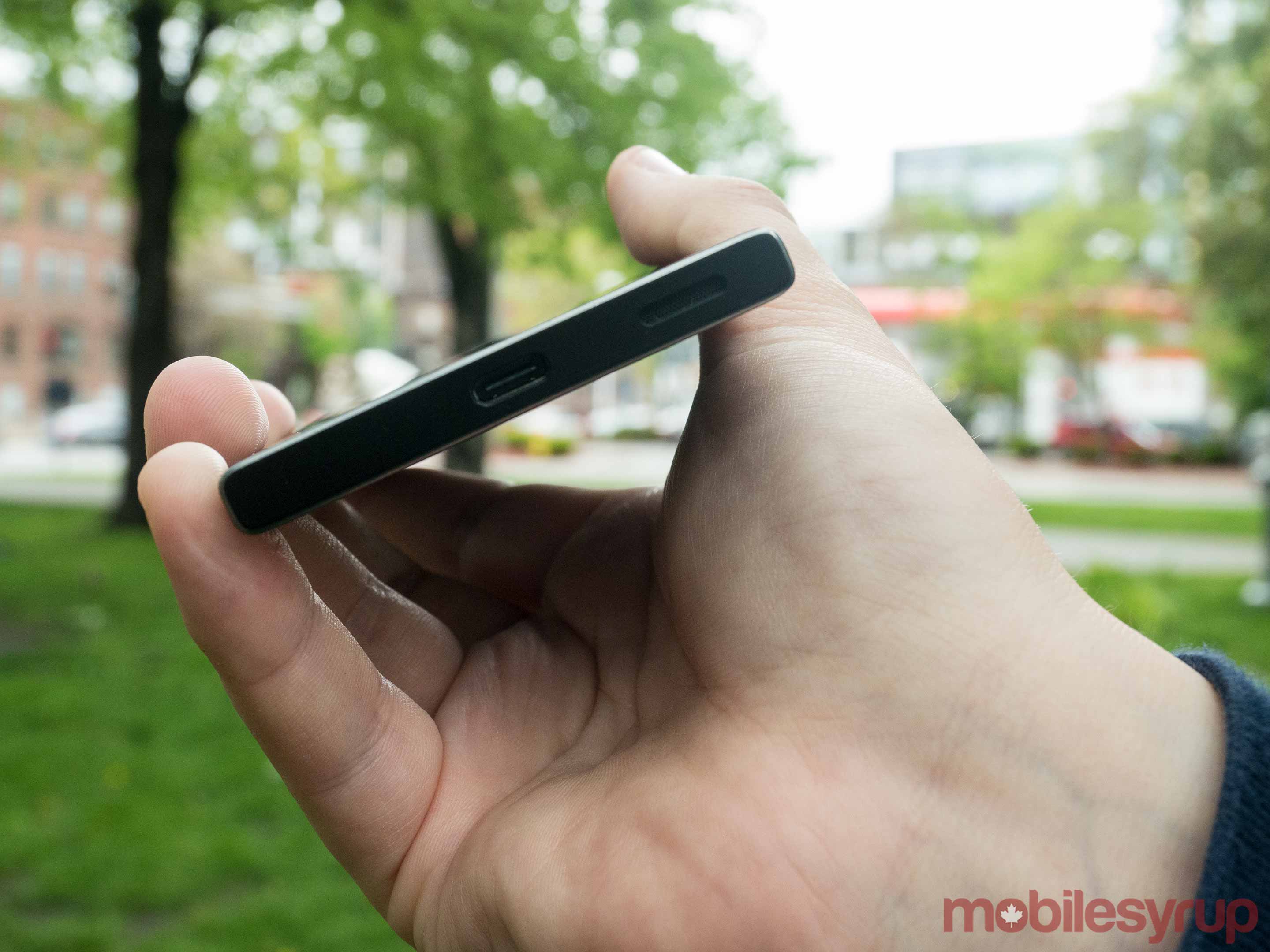
Then again, users who do either of those things also aren’t likely to look towards a smartphone with a 2,300mAh non-removable battery. Considering that’s smaller (in many cases much smaller) than any of the competitors I’ve listed, I was expecting to barely make it through the day using the Sony Xperia XA1.
But in reality, it’s not just the size of the battery that matters when it comes to overall battery life, it’s also important to consider the processor and its implementation. Yes, it’s only a 2,300mAh battery (and it should be removable), but the octa-core MediaTek Helio P20 chipset does a great job of sipping power moderately and the battery easily lasted me a day. This is similar to the Moto G5, which provided nearly two day battery life with its 2,800mAh battery and octa-core Qualcomm Snapdragon 430 chipset.
Of course, battery life is also highly dependent on usage, so it’s important to note that my common usage patterns in a day for this period included up to four hours of Wi-Fi music streaming, at least two hours of Wi-Fi browsing and 10 to 30 minutes of voice calling. I also got a little over four hours of screen time per charge, taking up about 900 to 1,000mAh of battery power.
All in all, I found the seemingly lacking battery more than adequate, and the phone also didn’t seem to have a tendency to overheat — perhaps in part because of its trickle-charging Qnovo Adaptive Charging technology — which should mean the battery won’t degrade too quickly.
An unimpressive camera experience
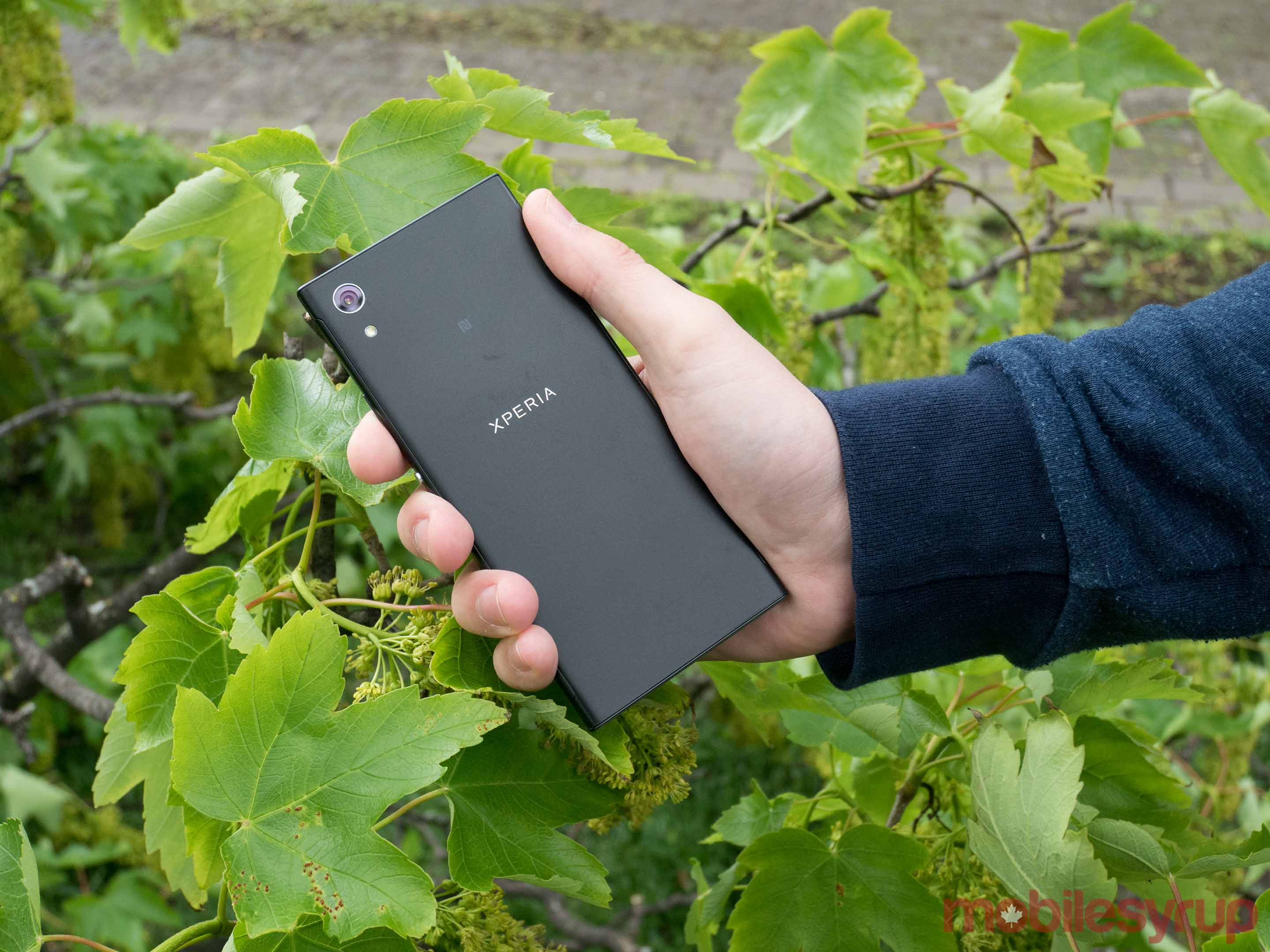
Leaping from the least impressive spec to the most, I would describe my experience with the Xperia XA1’s camera as mildly disappointing — mainly because the company attempted to shoehorn a premium camera into a budget device that seemingly can’t support it.
While better pictures are possible using manual mode, the rear-facing camera is prone to taking pictures that lack contrast and are easily washed out by bright expanses. Many of my photos featured sun flares alongside a lack of saturation. Pictures that may have made a statement if the textures and colours had been juxtaposed in strong contrast turned into boring, dull snaps.
On the flip side, the camera’s low-light shooting is a high point of this otherwise so-so camera package, providing relatively crisp photos in dim indoor areas with minimal blur.
Returning to another downside, however, the camera can take almost three full seconds to open from the lock screen — long enough to miss some moments or to create an awkward moment when you’re trying to snag a picture with Canadian celebrity Ben Mulroney (seen above). The autofocus was also a little slow to adapt, resulting in a few pictures with the wrong focus, and the photo capture has a bit of a lag, as well.
Having noted all that, the camera is still one of the most impressive I’ve seen in a budget phone — just not by any huge margin.
Solid performance

Other than the camera, most apps ran well on the device’s octa-core MediaTek Helio P20 and 3GB of RAM during my time with it, and I experienced no serious slow-downs or crashes, again pushing it slightly above many of its budget compatriots. The XA1’s competitors run the gamut when it comes to processors, from Exynos to MediaTek to Qualcomm Snapdragon and ranging between quad and octa-core, with speeds, reliability and performance varying as well.
As for internal storage, the device provides a respectable 32GB, expandable by microSDXC up to 256GB, with the system taking up 9.63GB of storage off the bat.
While Sony’s UI still contains a fair amount of bloatware, overall the manufacturer’s skin seems toned down from previous versions, and fairly close to stock Android, including swiping to the right from home to get to Google Now and a pre-installed app drawer (unlike LG). The pre-loaded apps include some extremely bloaty software such as ‘What’s New,’ ‘Sketch,’ ‘Lounge,’ and ‘Sony News’ — but only a few are permanent.
One of the crowd
Ultimately, the fact that this phone's value hinges on the camera experience makes it less valuable in my eyes, since its impressive specs don't provide a performance much above average.
The rest of the device compares favourably to its competitors -- especially its design -- but at the $320 price point there's not much of a compelling reason to purchase it over some of the other budget options available, most of which hover around $250.
"The fact that this phone's value hinges on the camera experience makes it less valuable in my eyes." 5/10
MobileSyrup may earn a commission from purchases made via our links, which helps fund the journalism we provide free on our website. These links do not influence our editorial content. Support us here.


